29 Iconic Vietnamese Noodle Dishes to Explore Today
Vietnamese noodles represent a vibrant culinary landscape that tantalizes taste buds with incredible complexity and regional diversity.
These slurpable delights capture the essence of Vietnamese food culture through intricate preparation techniques and bold flavor profiles.
Soft, chewy, or crisp textures transform simple ingredients into extraordinary gastronomic experiences that reflect centuries of traditional cooking methods.
Noodle dishes emerge from different regions, each bringing unique characteristics and local ingredients to the table.
Cultural influences merge seamlessly in these remarkable recipes, showcasing the creativity and passion of Vietnamese cuisine.
Regional variations tell stories of family traditions, agricultural practices, and generational cooking secrets passed down through time.
Unexpected combinations of herbs, proteins, and sauces elevate these dishes beyond mere sustenance into true culinary art forms.
Hungry for a delectable journey through Vietnam's most celebrated noodle creations? Uncover these 29 famous Vietnamese noodle dishes:
Famous Vietnamese Noodle Dishes for Slurping
Vietnamese noodle bowls are an adventure in taste, with fragrant broths, fresh herbs, and satisfying noodles. Each bowl is an invitation to slow down, slurp, and savor every spoonful.
Beef Pho (Pho Bo)
Beef pho dominates Vietnamese cuisine as a robust noodle soup featuring rich beef broth simmered with aromatic spices like cinnamon, star anise, and cardamom.
Authentic versions include multiple beef cuts such as fatty brisket, flank, eye-round steak, tripe, and tender tendon, creating complex layered flavors.
Rice noodles form beef pho's hearty base, complemented by fresh toppings of cilantro, sliced onions, and green onions.
Traditional preparation involves slow-cooking beef bones, shank, oxtail, and neck to extract deep, intense flavors.
Vietnamese restaurants serve this soup steaming hot, allowing diners to experience a harmonious blend of tender meat and fragrant broth.
Some versions incorporate beef balls, though less common in traditional settings.
Quang-Style Noodles (Mi Quang)
Mi quang is a vibrant Vietnamese noodle dish featuring a harmonious blend of flat rice and yellow egg noodles bathed in a small amount of concentrated meat broth.
Regional origins trace back to Quang Nam Province in Central Vietnam, where local cooks first crafted this signature meal.
Colorful toppings like pork belly, shrimp, chicken, and fish complement the noodles, while fresh herbs including banana blossoms, cilantro, and Vietnamese coriander add complexity.
Roasted peanuts and crispy fish crackers provide extra texture and crunch to the dish.
Boiled eggs frequently garnish the plate, enhancing its protein content.
Traditional preparation involves carefully balancing flavor and visual appeal through strategic ingredient placement.
Modern variations spread across Vietnam showcase regional interpretations of this beloved noodle specialty.
Southern Vietnamese Beef Noodle Salad (Bun Bo Nam Bo)
Bun bo nam bo epitomizes Vietnamese street food's bold flavor complexity through a harmonious cold noodle beef dish originating in southern Vietnam.
Rice vermicelli noodles form its base, topped with sizzling stir-fried beef seasoned with garlic and traditional spices.
Fresh herbs like cilantro and mint create a vibrant layer of brightness against crisp vegetables including carrots, cucumbers, and bean sprouts.
Roasted peanuts and fried shallots add textural crunch and nutty undertones to each bite.
Balanced sauce components marry the ingredients with tangy and savory notes.
Simple preparation allows each ingredient's natural flavor to shine through.
Southern Vietnamese cuisine celebrates this dish as a quick, satisfying meal that captures regional culinary traditions.
Diners enjoy the refreshing combination of warm beef and cool noodles in every mouthful.
Pho
Pho dominates Vietnamese cuisine as a soul-warming noodle soup blending intricate flavors through a complex broth simmered for hours with beef or chicken bones.
Rich culinary traditions infuse this national dish with deep cultural significance beyond mere sustenance.
Fragrant herbs and spices transform the broth into a sensory experience that changes with each serving.
Chewy rice noodles provide a perfect base for tender meat slices and crunchy bean sprouts.
Restaurants and street vendors across Vietnam prepare pho with unique regional variations.
Fresh ingredients like basil, lime, and chili peppers complement the soup's robust profile.
Western food lovers have embraced this Vietnamese staple, spreading its popularity globally.
Regional differences ensure no two bowls of pho taste exactly the same.
Grilled Pork And Rice Vermicelli (Bun Thit Nuong)
Bun thit nuong emerges as a quintessential Vietnamese noodle dish featuring marinated grilled pork served over rice vermicelli with fresh herbs and vegetables.
Southern Vietnam claims this savory meal as its signature creation, closely related to Hanoi's famous bun cha.
Nuoc cham, a tangy fish sauce blended with lime juice, water, and sugar, delivers the dish's signature flavor profile.
Restaurant and street vendors across Vietnam prepare this balanced meal by layering grilled meat atop cold noodles.
Herbs and leafy greens add freshness and complexity to each bite.
Diners mix the ingredients together to create a harmonious blend of textures and tastes.
Its simplicity and bold flavors make bun thit nuong a beloved street food staple throughout Vietnam.
Grilled Pork Meatballs With Vermicelli Noodles (Bun Cha)
Bun cha embodies Hanoi's street food culture through its signature grilled pork meatballs swimming in tangy, aromatic broth alongside fresh rice noodles and herbs.
Vietnamese street vendors expertly grill marinated pork patties and strips over charcoal, creating smoky, caramelized meat infused with fish sauce, garlic, and sugar.
Barack Obama and Anthony Bourdain famously shared this dish during a memorable 2016 television episode, catapulting bun cha into international culinary spotlight.
Noodle bowls arrive with crisp herbs like perilla, lettuce, and coriander, offering refreshing contrast to rich meat flavors.
Northern Vietnam, particularly Hanoi, considers this dish a regional specialty with deep cultural roots.
Diners traditionally mix noodles, meat, and herbs, creating complex taste profiles in each bite.
Fish sauce-based broth provides a perfect balance of salty, sweet, and sour notes.
Northern Vietnamese Beef Pho (Pho Bo Tai Chin)
Pho bo tai chin dominates Northern Vietnamese cuisine as a hearty beef noodle soup featuring contrasting beef textures and complex spice profiles.
Rich beef broth simmered with ginger, onions, and warm spices like anise, cloves, and cinnamon forms its aromatic base.
Tender slices of well-done and rare beef are added just before serving, cooking gently in the steaming liquid.
Fragrant rice noodles provide a soft foundation for the meat and broth.
Fresh garnishes including Thai chili peppers, bean sprouts, cilantro, and Asian basil add bright, crisp layers of flavor.
Lime wedges complement the soup's depth with sharp citrus notes.
Traditional preparation involves carefully layering ingredients to maximize taste and texture.
Vietnamese families often share this soup as a comforting meal that balances complex spices with fresh, light elements.
Chicken Pho (Pho Ga)
Pho ga represents a delicate Vietnamese chicken noodle soup featuring a light, clear broth crafted from simmered chicken bones and aromatic spices.
Originating in the 1930s during market meat restrictions, this dish offers two protein variations: normal style with white and dark meat, or lean chicken with sliced breast meat.
Fragrant rice noodles swim in the gentle broth alongside tender chicken pieces, complemented by fresh herbs like cilantro, green onions, and shallots.
Traditional garnishes include crisp bean sprouts, zesty lime wedges, spicy chili peppers, cooling mint leaves, and Thai basil sprigs.
Vietnamese families often enjoy this lighter version of pho as a comforting meal that balances subtle flavors and nutritious ingredients.
Fish sauce adds depth and complexity to the broth, creating a harmonious blend of tastes that makes pho ga a beloved national dish.
Each bowl provides a warming, balanced experience that reflects Vietnam's rich culinary heritage.
Stir-Fried Pho (Pho Xao)
Pho xao represents a quick-cooking Vietnamese noodle dish featuring stir-fried flat rice noodles with tender beef or chicken and crisp vegetables.
Beef remains the most popular protein choice in this street-style meal that transforms traditional pho's broth-based format into a fast, flavorful skillet preparation.
Cooks typically season the dish with oyster sauce, soy sauce, and fish sauce for depth and umami character.
Fresh herbs and raw vegetable garnishes provide bright, aromatic contrasts to the savory noodle base.
Flat rice noodles create a silky, smooth texture that absorbs the rich sauces perfectly.
Each ingredient gets quickly seared to maintain its individual flavor and texture.
Vietnamese home cooks and street vendors prepare this dish as a faster alternative to classic pho.
Restaurants across Vietnam serve pho xao as a popular lunch and dinner option.
Vegan Pho (Pho Chay)
Pho chay revolutionizes traditional Vietnamese soup with its plant-based, flavor-packed vegetarian approach that transforms classic meat-based recipes into a nourishing bowl of comfort.
Vietnamese Buddhist monks originally crafted this elegant soup as a meat-free alternative during spiritual observances, using robust mushroom broth infused with aromatic spices like cinnamon, cloves, and cardamom.
Ginger and onions form the foundational flavor profile, while soy sauce deepens the umami richness of the broth.
Large rice noodles provide substantial texture, swimming alongside protein-rich tofu and meaty mushrooms.
Bean sprouts, sliced chili peppers, and seasonal vegetables like leeks, carrots, and pak choi add layers of crunch and nutrition.
Chefs customize each bowl with unique vegetable combinations, sometimes introducing unexpected ingredients like crisp apple slices.
Warm, complex, and deeply satisfying, pho chay offers a compassionate twist on a beloved national dish.
Rice Noodle Bowls With Pork And Spring Rolls (Bun Thit Nuong Cha Gio)
Bun thit nuong cha gio represents Vietnamese street food mastery with its complex layers of flavor and texture combining grilled marinated pork, crispy fried spring rolls, and delicate rice vermicelli noodles.
Rice vermicelli serves as the cool foundation for succulent grilled pork seasoned with traditional Vietnamese spices and marinades.
Cha gio spring rolls add a satisfying crunch to each bite with their golden-brown exterior and savory filling.
Fresh herbs like mint and cilantro provide bright, aromatic notes that cut through the rich meat and fried elements.
Nuoc cham fish sauce brings a tangy, salty dimension that balances all components with its signature umami punch.
Cucumber and pickled vegetables contribute refreshing crispness and textural contrast to the dish.
Diners typically mix all ingredients together before eating to ensure every spoonful contains a perfect blend of flavors.
Tomato And Crab Noodle Soup (Bun Rieu)
Bun rieu is a savory Vietnamese noodle soup celebrated for its rich crab-infused broth and complex flavor profile.
Vietnamese families craft this dish with a tangy tomato base and delicate crab paste that creates a distinctive taste sensation.
Cooks prepare the soup with vermicelli noodles and layer in protein-packed ingredients like tender crab meat, pork, and soft tofu.
Bright red tomatoes add depth and color to the broth, while blood jelly contributes a unique texture.
Fresh garnishes including perilla leaves and bean sprouts provide a crisp contrast to the warm soup.
Diners typically enjoy bun rieu as a hearty breakfast or satisfying lunch option.
Home cooks and restaurant chefs alike take pride in their distinctive bun rieu preparation methods.
Rice Vermicelli Noodles With Fried Tofu And Shrimp Paste (Bun Au Mam Tom)
Bún đậu mắm tắm is a classic Vietnamese street food featuring a unique combination of rice vermicelli noodles, crispy fried tofu, and pungent fermented shrimp paste.
Diners customize their plate by arranging fresh green herbs and optional boiled pork slices around the central ingredients.
Mắm tắm, the signature fermented shrimp sauce, receives a zesty splash of lemon or kumquat juice before serving.
Restaurants and street vendors across Vietnam prepare this dish with precision and pride.
Street food enthusiasts relish its bold flavors and interactive dining experience.
Vietnamese culinary traditions shine through this simple yet flavorful street food.
Nam Vang Noodle Soup (Hu Tieu Nam Vang)
Hu tieu Nam Vang is a vibrant Vietnamese noodle soup born from Cambodian-Chinese culinary traditions, featuring a complex broth simmered from pork bones, dried seafood, and aromatic spices.
Transparent rice noodles or delicate egg noodles form the base of this street food classic, swimming with tender proteins like sliced pork liver, ground pork, and succulent poached shrimp.
Quail eggs and crispy fried shallots add layers of texture and depth to the dish, which originates from Phnom Penh (Nam Vang) but has been masterfully adapted by Vietnamese cooks.
Each bowl tells a story of cultural exchange and gastronomic creativity, blending Cambodian, Chinese, and Vietnamese flavor profiles.
Fresh herbs and a splash of lime often garnish the soup, creating a balanced and refreshing meal.
Duck Noodle Soup With Bamboo Shoots (Bun Mang Vit)
Bun mang vit exemplifies Vietnamese culinary mastery through its robust duck and dried bamboo shoot soup.
Duck meat provides rich, deep flavors that anchor the broth's complex profile.
Vermicelli noodles add satisfying texture alongside traditional seasonings like fish sauce and ginger.
Fresh herbs including cilantro, mint, and perilla create aromatic layers throughout the dish.
Onions, shallots, and chili peppers contribute subtle heat and depth to each spoonful.
Cabbage offers mild crunch and additional nutritional balance.
Vietnamese kitchens prepare this soup as a comforting meal celebrating regional ingredients.
Regional cooking techniques transform simple components into a memorable dining experience.
Mixed Pho (Pho Tron)
Pho tron delivers a refreshing Vietnamese noodle salad bursting with bold flavors and textures from Hanoi's street food scene.
Dry noodle dishes combine marinated beef or chicken with crisp fresh herbs like mint, Thai basil, and cilantro.
Sliced meat gets seasoned with salt, ginger, pepper, garlic, and five spice powder before browning in a pan.
Rice noodles form the base of this summer-friendly meal.
Fried shallots add crunch to the mix.
Dressing made from vinegar, fish sauce, sugar, and tamarind paste coats each ingredient.
Bean sprouts provide extra freshness.
Minimal broth allows ingredients to shine independently.
Vietnamese Thick Noodle Soup (Banh Canh)
Banh canh are Vietnamese thick noodle soups distinguished by their unique, chewy rice or tapioca flour noodles that provide a distinctive texture unlike other Vietnamese noodle dishes.
Vietnamese street vendors and home cooks prepare these soups with diverse protein options including succulent ham, tender snakehead fish, or sweet crab.
Noodles are hand-cut or machine-processed into irregular, plump shapes that absorb rich broths perfectly.
Typical garnishes include fresh herbs, sliced green onions, and crispy fried shallots.
Coastal regions often feature seafood-based versions with local catch.
Banh canh noodles differ from traditional Vietnamese noodles by their thicker, more substantial texture.
Street food enthusiasts consider this dish a comforting, satisfying meal available throughout Vietnam.
Roasted Pork With Cao Lau Noodles (Cao Lau)
Cao lau stands as a unique Vietnamese noodle dish exclusive to Hoi An, blending intricate local ingredients with precise preparation techniques that make it impossible to replicate outside the region.
Regional water from Ba Le well, ash-treated rice flour, and specific local tree ashes create its distinctive noodle base.
Roasted pork slices add rich protein to the dish's complex texture.
Crispy croutons made from similar noodle ingredients provide crunch and depth.
Fresh greens and bean sprouts contribute brightness and nutrition.
Minimal stock enhances the overall flavor profile without overwhelming the carefully balanced ingredients.
Each component represents generations of culinary tradition specific to Hoi An's cultural heritage.
Regional specificity makes cao lau a true gastronomic treasure that cannot be duplicated elsewhere.
Red Noodle Soup With Crab (Banh A Cua)
Bun cha ca is a celebrated Vietnamese seafood noodle soup originating from Hai Phong, showcasing regional culinary traditions through its rich pork-based broth and diverse protein selections.
Maritime heritage shines through its signature crab meat, which adds a luxurious seafood dimension to the dish.
Fresh herbs and green onions provide bright, aromatic layers that complement the soup's complex flavor profile.
Pork balls and cha lua sausage contribute hearty protein elements that enhance the broth's depth.
Ground meat wrapped in betel leaves offers an additional protein variation for diners seeking textural diversity.
Carefully prepared rice noodles serve as the foundational base, absorbing the broth's nuanced flavors.
Each ingredient is meticulously selected to create a balanced, harmonious eating experience.
Regional cooking techniques ensure authentic preparation that reflects Hai Phong's maritime culinary traditions.
Fermented Fish Noodle Soup (Bun Mam)
Bun mam represents a bold Vietnamese seafood noodle soup bursting with intense fermented fish flavors from Soc Trang province.
Murky, salty mam broth forms the powerful base of this complex dish, combining rice vermicelli noodles with succulent seafood like squid, shrimp, and catfish.
Roasted pork belly adds rich depth to the soup's profile.
Fresh herbs including bitter knotgrass, bean sprouts, chives, and banana blossom complement the broth's powerful umami character.
Eggplant pieces soak up the intense flavors, creating additional layers of taste.
Fragrant fish cakes provide extra texture and protein to the bowl.
Pungent aromas signal this dish's unique and adventurous culinary experience for brave food explorers.
Fried Fish Cake Noodle Soup (Bun Cha Ca)
Bun cha ca stands as a distinctive Vietnamese noodle soup showcasing Da Nang's coastal culinary traditions with its rich, savory fish-based broth.
Fragrant white fish fillets are carefully transformed into dense, meaty cakes that float atop steaming noodles.
Tomatoes and fish or pork bones create a complex, warming base that defines the dish's unique flavor profile.
Skilled cooks carefully select firm white fish like mackerel or snapper to craft the signature cakes.
Regional ingredients contribute depth and authenticity to each carefully prepared bowl.
Da Nang fishermen traditionally influence the soup's ingredients and preparation methods.
Restaurants and street vendors throughout central Vietnam serve this beloved regional specialty.
Diners enjoy bun cha ca as a comforting and satisfying meal that reflects Vietnamese maritime cuisine.
Vietnamese Dry Noodles (Hu Tieu Kho)
Hu tieu kho stands as a signature Southern Vietnamese noodle specialty featuring unique dry-style preparation where noodles arrive without traditional soup broth.
Regional Vietnamese cuisine celebrates this dish through its complex layered flavors and carefully balanced ingredients.
Seafood and meat combine elegantly with white radish, ground pork, and delicate boiled quail eggs as primary components.
Savory seasonings like garlic, soy sauce, scallions, and shallots enhance the overall taste profile.
Careful preparation involves mixing proteins and vegetables with precise spice measurements.
Home cooks typically serve hu tieu kho as a satisfying meal with multiple textural elements.
Restaurants across southern Vietnam showcase this dish as a staple street food option.
Southern Vietnamese culinary traditions shine through this simple yet sophisticated noodle presentation.
Crab Meat And Glass Noodle Stir-Fry (Mien Xao Cua)
Mien xao cua represents Vietnamese coastal cuisine's seafood mastery, combining delicate glass noodles with sweet crab meat in a quick stir-fry technique.
Rich crab provides robust flavor while wood-ear and shiitake mushrooms add earthy undertones to the dish.
Carrots and bean sprouts contribute fresh crunch and balanced nutrition to each bite.
Vietnamese families traditionally prepare this meal using minimal ingredients and fast cooking methods.
Fish sauce creates depth with its umami character, complementing the seafood's natural sweetness.
Lime juice adds bright acidity that cuts through the richness of the crab.
Home cooks typically use a large wok or pan to ensure even heat distribution during stir-frying.
Minced garlic and a touch of sugar round out the complex flavor profile of this beloved Vietnamese noodle specialty.
Da Nang-Style Rice Noodles With Fermented Fish Sauce And Pork (Bun Mam Da Nang)
Bun mam Da Nang represents a robust Vietnamese seafood noodle soup packed with intense umami flavors from fermented fish sauce.
Central Vietnamese kitchens craft this complex dish combining rice vermicelli noodles with layers of fresh ingredients like shredded papaya and crisp lettuce.
Roasted pork skin adds rich texture while peanuts contribute crunch and depth to each spoonful.
Chili and white vinegar create a sharp counterpoint to the deep marine notes of the fermented sauce.
Regional cooks carefully balance multiple ingredients to achieve a harmonious blend of sour, spicy, and savory elements.
Traditional preparation requires skillful mixing of proteins, vegetables, and seasonings.
Seafood lovers appreciate its bold flavor profile and hearty composition.
Vietnamese diners consider this dish a true reflection of Da Nang's culinary heritage.
Rice Vermicelli With Jellyfish And Fish (Bun Ca Sua)
Bun ca sua represents a distinctive Vietnamese seafood noodle soup from Nha Trang featuring paradise or leatherjacket fish as its signature protein.
Fishermen carefully select fresh fish to create a rich, aromatic broth that defines this regional specialty.
Delicate rice vermicelli noodles form the base of this complex dish.
Skilled cooks prepare jellyfish by soaking in alum water, rinsing, slicing, and parboiling before adding to the bowl.
Fried fish paste adds a unique textural element to the soup's composition.
Preparation involves layering noodles, jellyfish slices, and fish paste before covering with hot broth.
Coastal Vietnamese communities traditionally enjoy this seafood-driven meal as a flavorful lunch or dinner option.
Regional ingredients and precise cooking techniques make bun ca sua a memorable coastal culinary experience.
Crab Tapioca Noodle Soup (Banh Canh Cua)
Banh canh cua is a Vietnamese seafood noodle soup celebrated for its distinctive thick, chewy noodles made from rice and tapioca flour.
Originating in southern Vietnam, this hearty dish features succulent crab meat swimming in a flavorful broth.
Street vendors and restaurants across Ho Chi Minh City prepare the soup with fresh crab as the star ingredient.
Cooks season the broth with aromatic spices and herbs to enhance its depth of flavor.
Each bowl combines tender noodles with generous chunks of crab meat, creating a satisfying meal.
Garnishes like green onions, cilantro, and chili peppers add extra complexity to the dish.
Vietnam's coastal regions particularly embrace this comforting and filling soup as a beloved street food staple.
Cellophane Noodles With Eel (Mien Luon)
Miến lươn is a signature Vietnamese eel noodle soup featuring a rich broth swimming with tender eel pieces and translucent cellophane noodles.
Regional Vietnamese kitchens prepare eel through two traditional methods: crispy frying (gion) or gentle steaming (mem).
Fresh ingredients like banana flowers, morning glory, and crunchy bean sprouts enhance the soup's complex flavor profile.
Cooking techniques vary across different Vietnamese provinces, with each region adding unique touches to the preparation.
Local markets carefully select fresh eels to ensure optimal taste and texture.
Home cooks value this dish for its nutritious combination of proteins and vegetables.
Vietnamese families often enjoy miến lươn during cooler months as a warming meal.
Que Son Tapioca Noodle In Spicy Sauce (Pho San Que Son Tron Sot Cay)
Pho san Que Son tron sot cay represents a bold Vietnamese noodle specialty from Quang Nam province, featuring distinctive tapioca noodles immersed in a fiery sauce that electrifies taste buds.
Regional cooks craft these unique noodles with precision, creating a silky yet chewy texture that sets them apart from traditional wheat-based varieties.
Tropical herbs like basil, mint, coriander, and crisp bean sprouts enhance the dish's complex flavor profile.
Spicy sauce coats each noodle strand, delivering an intense heat that lingers on you.
Ingredients blend seamlessly, creating a balanced and vibrant meal.
Vietnamese culinary traditions shine through this innovative dish.
Regional techniques and fresh components elevate the eating experience.
Noodle lovers savor every spoonful of this memorable creation.
Sour Pho (Pho Chua)
Pho chua represents a distinctive Northern Vietnamese noodle soup featuring complex flavor profiles and unique ingredient combinations.
Vietnamese regions prepare two primary versions of this traditional dish with varied components.
First-version ingredients include pink rice noodles, peanuts, pickles, soy sauce, sour pickle liquid, and Northern sauce.
Second-version recipes combine dry ingredients like sliced and fried potatoes, pig's liver, and roasted duck meat with a flavorful broth made from garlic, vinegar, and sugar.
Regional cooks carefully balance sweet, sour, and savory elements to create this memorable meal.
Each version offers a different culinary experience reflecting local taste preferences.
Diners enjoy pho chua as a satisfying and intriguing noodle soup that showcases Vietnam's diverse food culture.
How Do Broth-Based vs. Dry Vietnamese Noodles Compare in Flavor?
Vietnamese noodle dishes come in two delicious styles: comforting soups and vibrant dry bowls. Each brings its own unique flavor experience that keeps food lovers coming back for more.
What Role Does Fresh Herb Garnish Play in Vietnamese Noodle Culture?
Fresh herbs are the secret superheroes of Vietnamese noodles, bringing brightness and balance that make every bite pop.
How Spicy Are Vietnamese Noodle Dishes Compared to Thai or Korean?
When it comes to spice, Vietnamese noodles keep things mild and welcoming, letting you control the heat just the way you like it.
While chili and sriracha are common accompaniments, they’re usually served on the side, so you can add as much or as little kick as you want.
In contrast, Thai dishes often deliver a fiery blast with fresh and dried chilies, and Korean cuisine brings bold heat through fermented chili pastes like gochujang.
Vietnamese flavors focus on balance, making spice a customizable part of the experience.

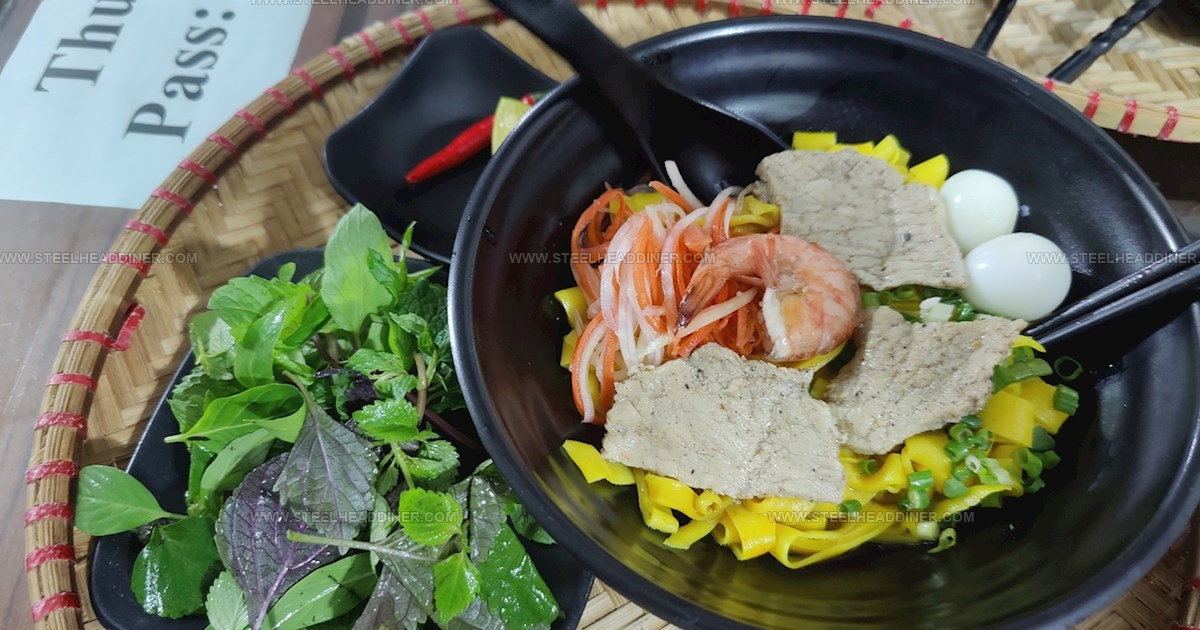
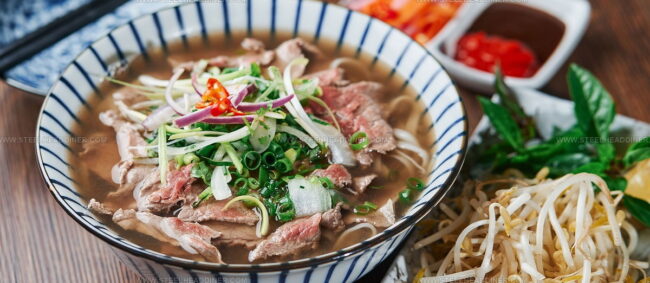
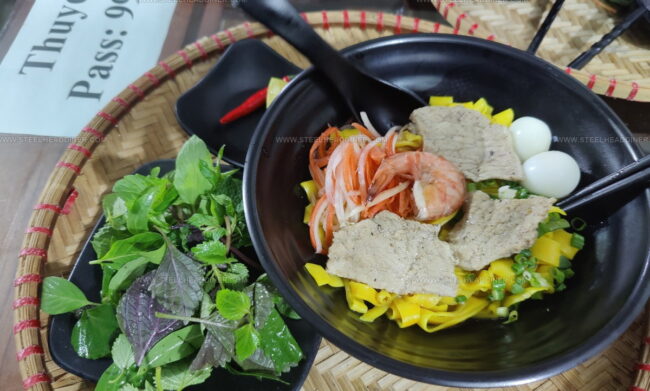
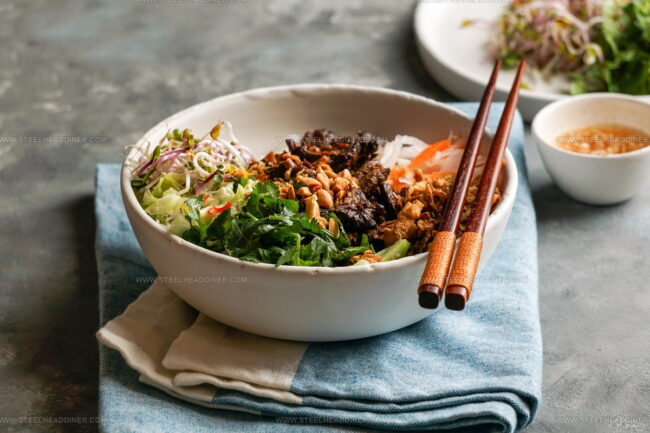
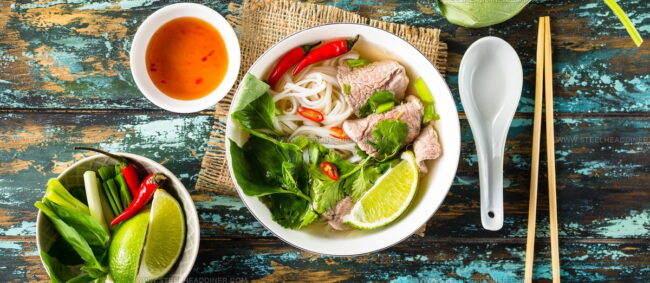
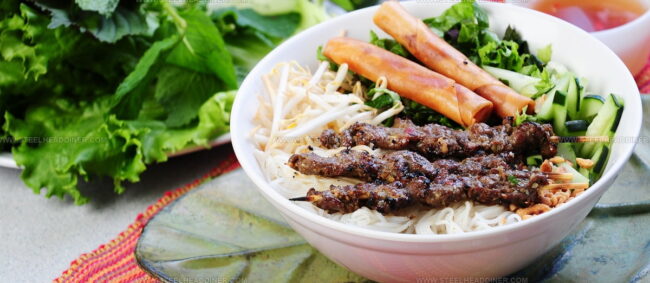
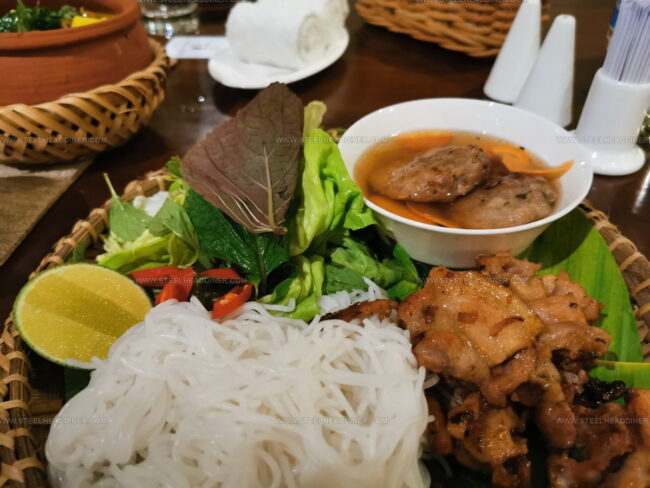

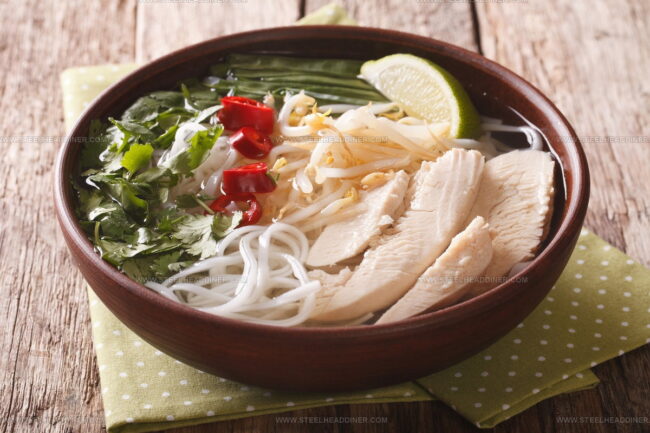
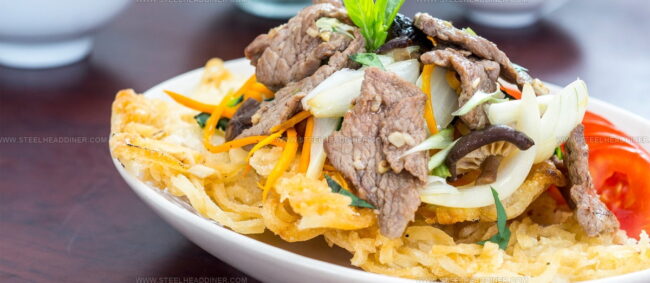
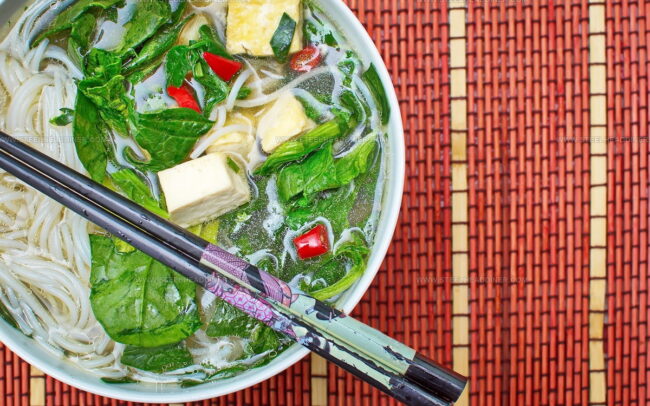
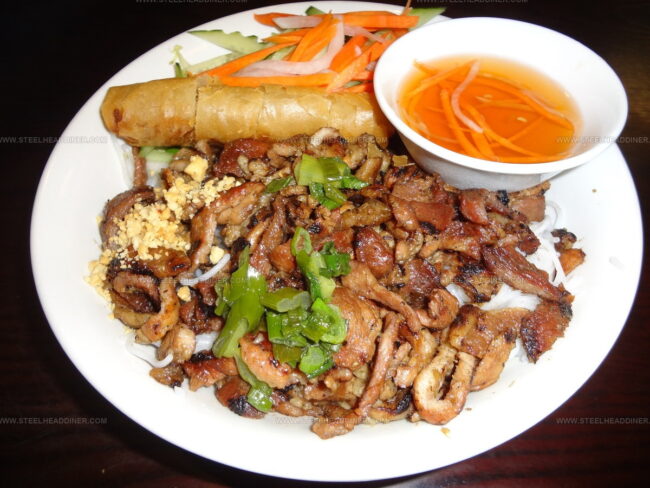
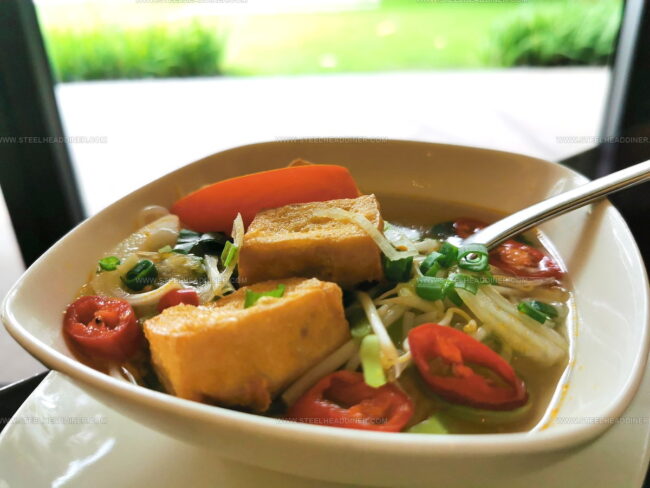
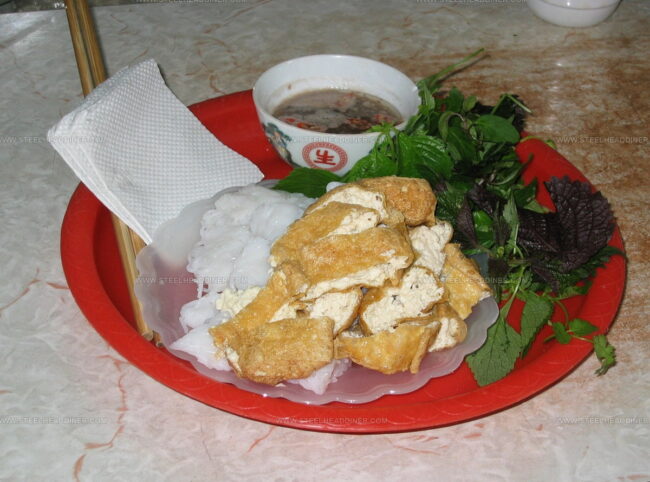
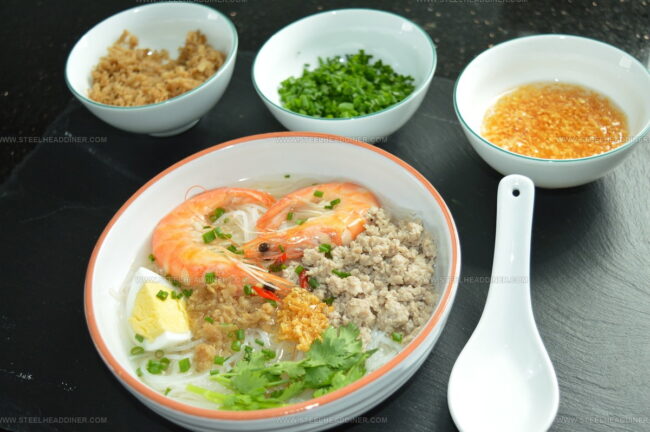
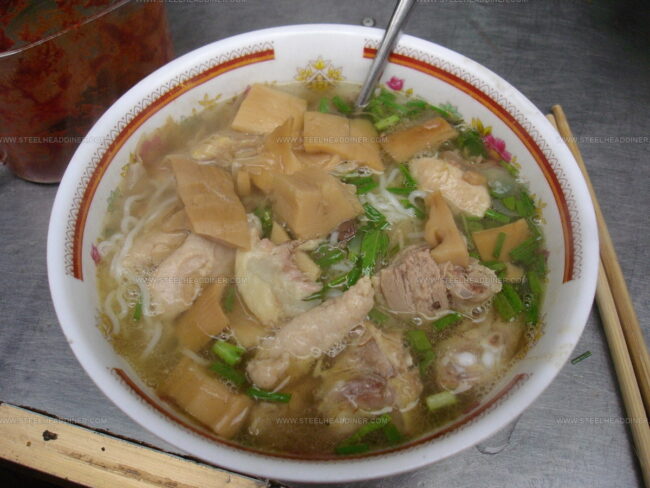
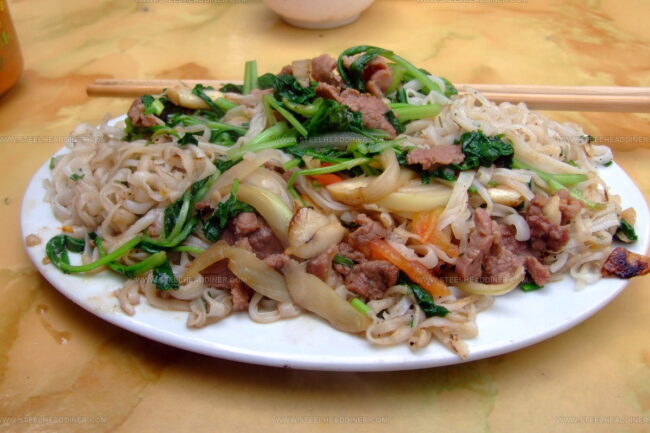
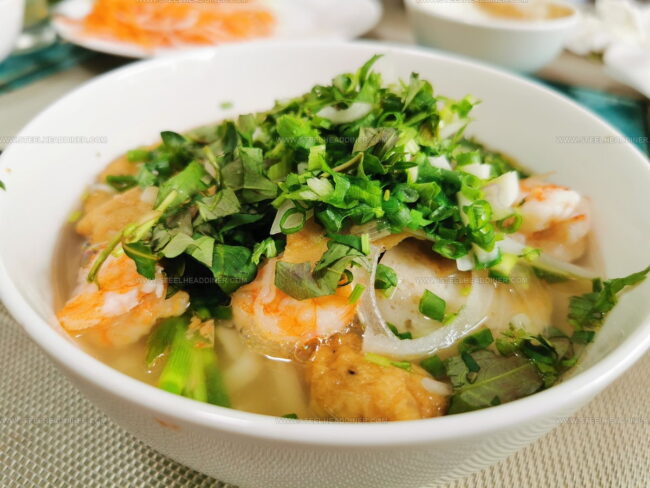
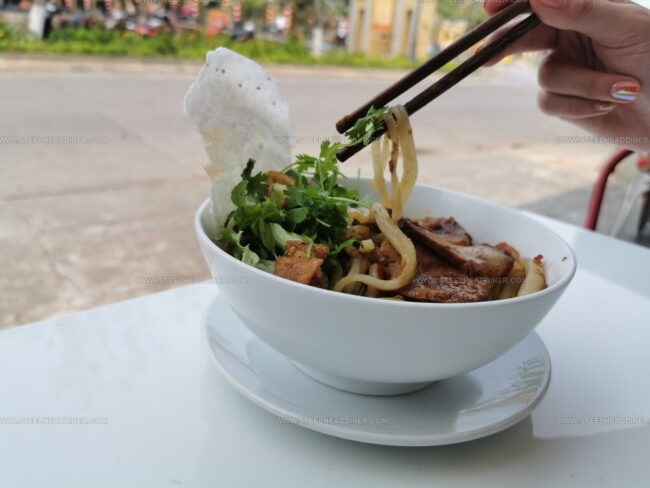
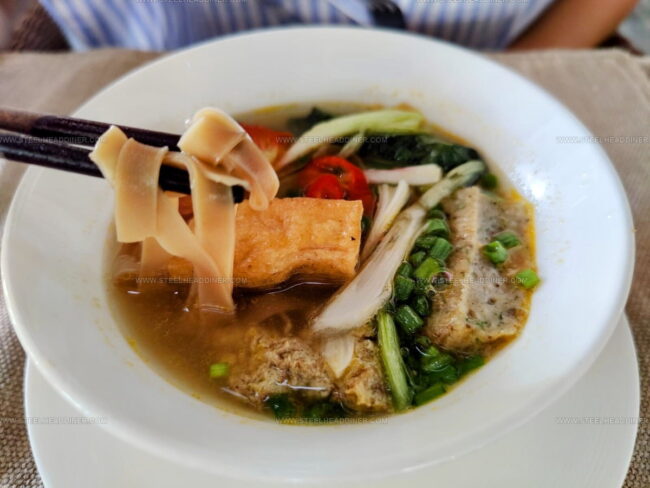
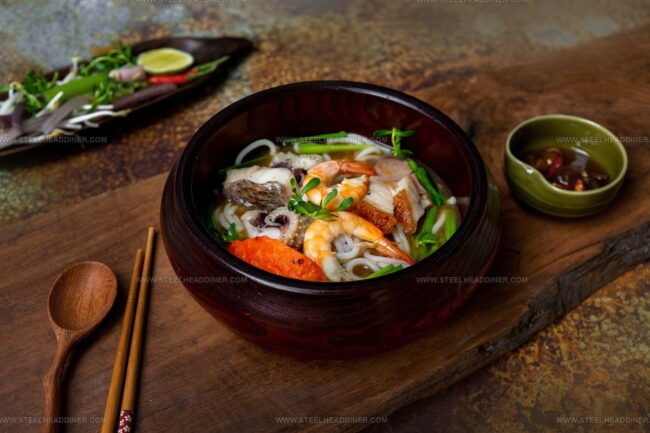
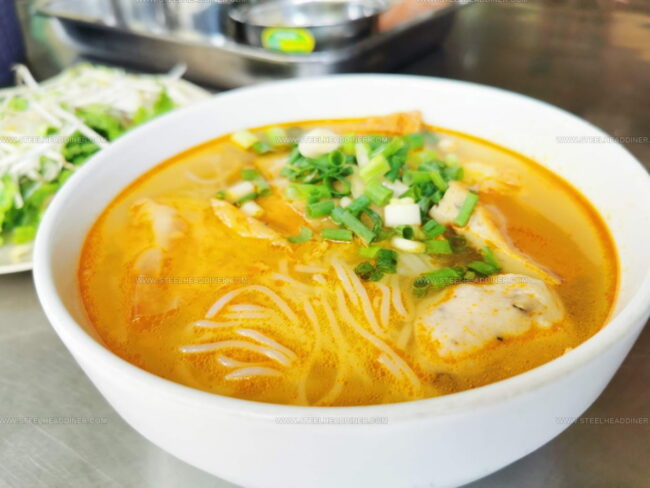
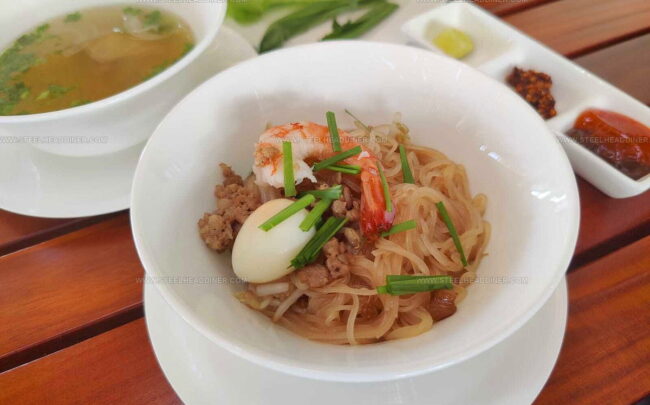
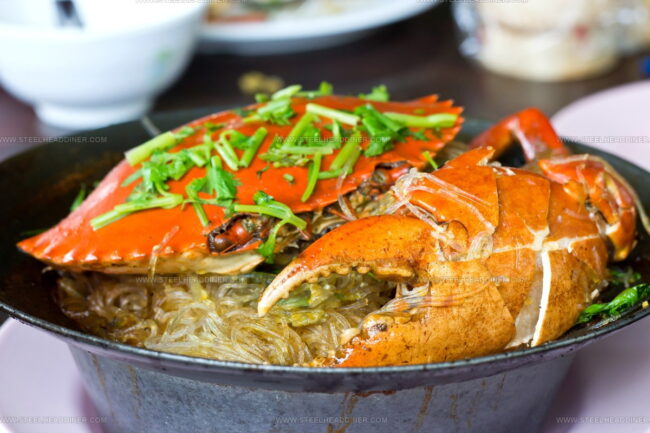
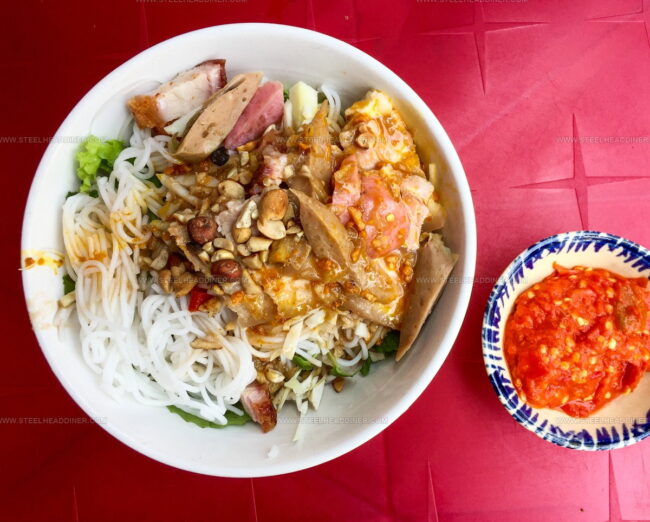
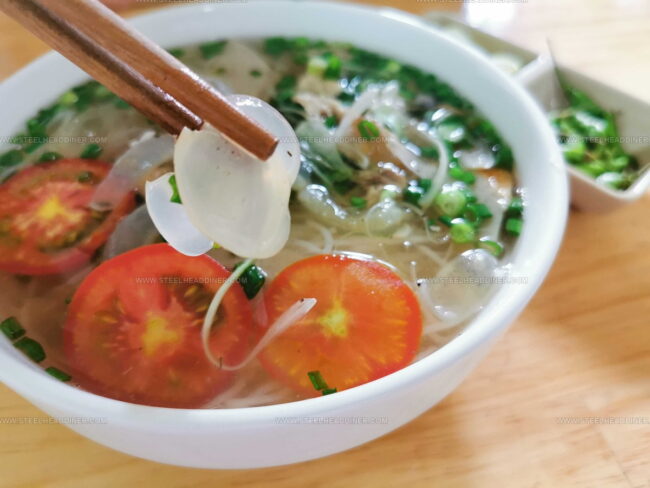
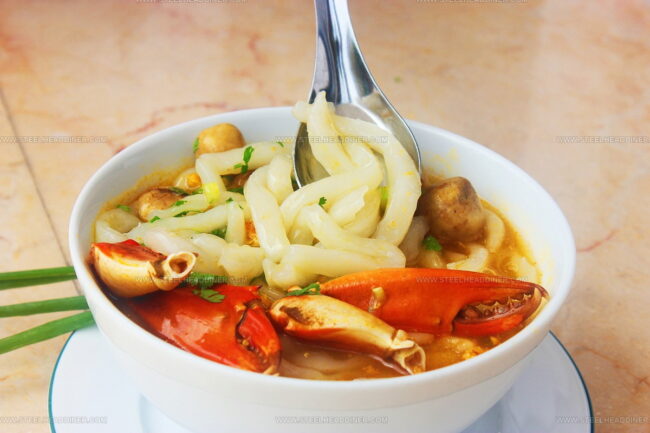
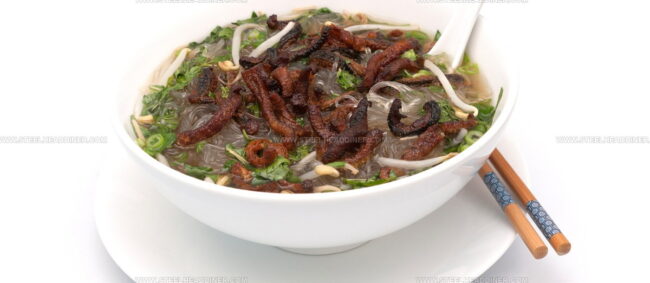
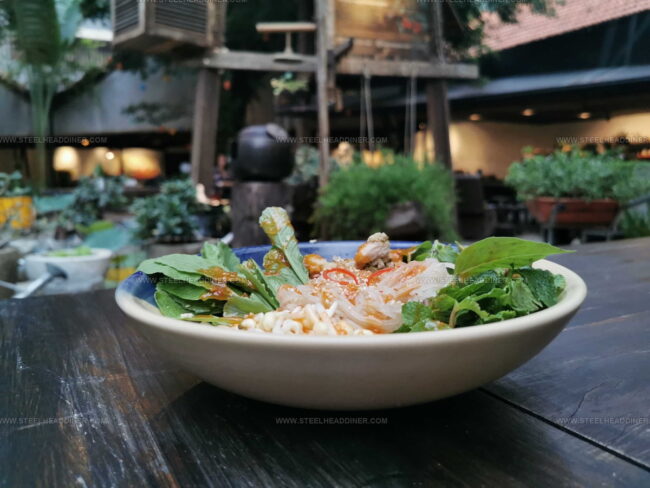
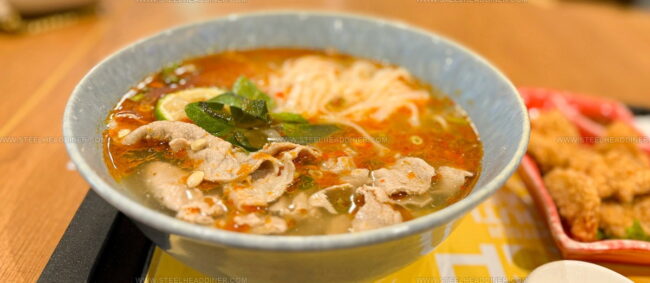
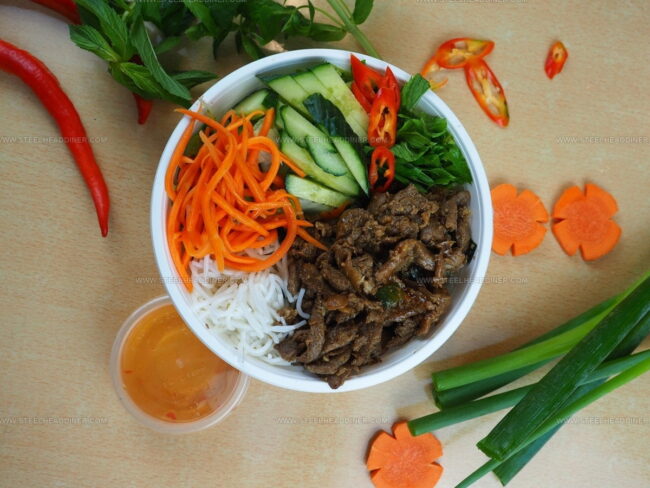
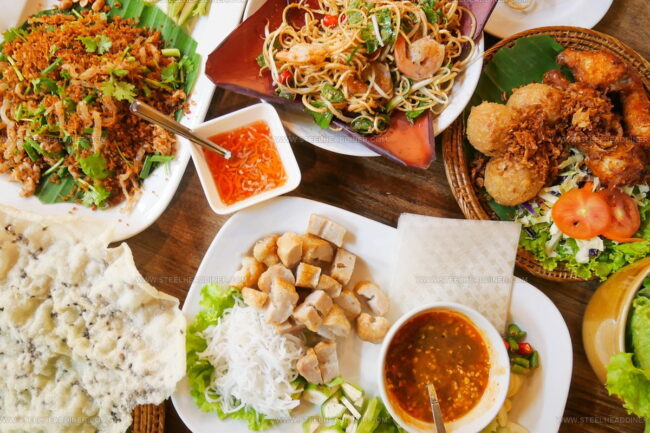
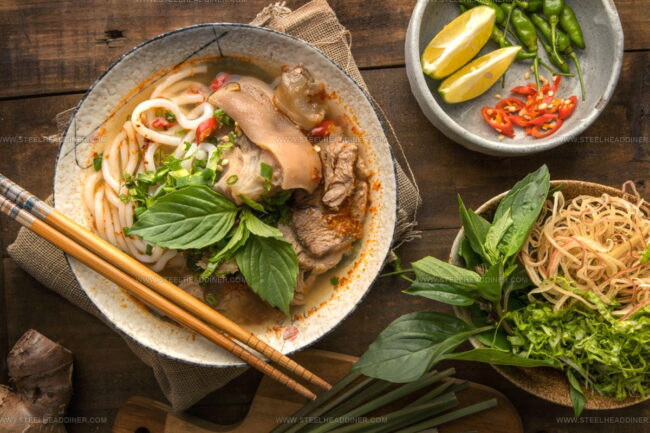
Jack Monroe
Founder & Recipe Innovator
Expertise
Pacific Northwest cuisine, Single-serving recipe development, Sustainable sourcing and cooking, Modern comfort food
Education
Brightwater
Associate of Applied Science in Culinary Arts
Focus: Sustainable cooking, seasonal ingredients, and food systems education
Jack grew up with a fishing rod in one hand and a cast-iron skillet in the other. After graduating from Brightwater: A Center for the Study of Food, he set out to prove that cooking for one could still taste like a feast.
Jack believes that food should feel real: fresh, fearless, and a little wild, just like the rivers he grew up around. For Jack, every single dish is a small adventure, and the best ones are the ones you can cook with heart, not hassle.